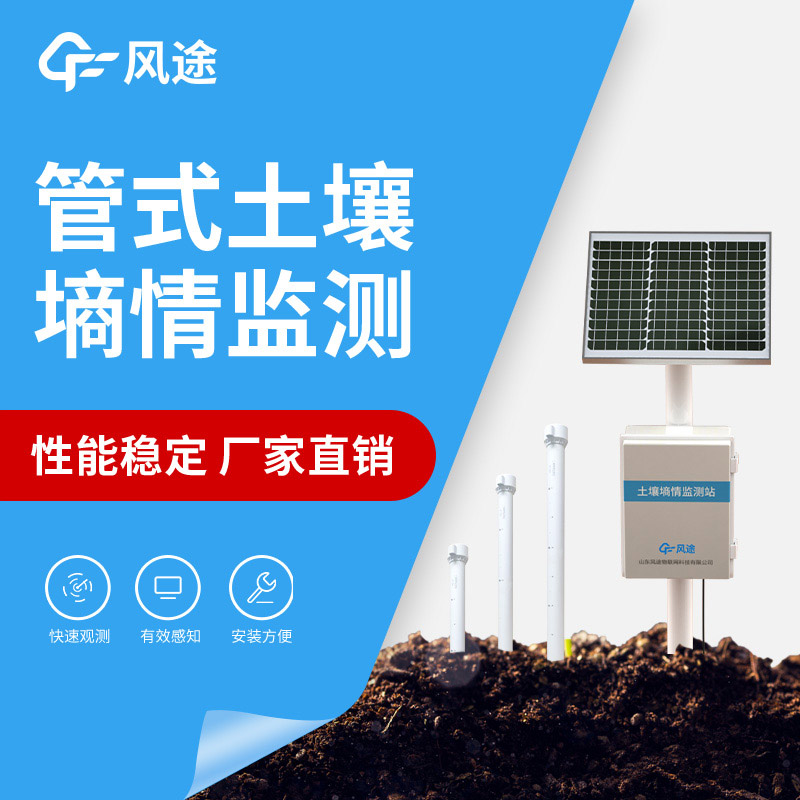Shandong Fengtu IOT Technology Co., Ltd
Sales Manager:Ms. Emily Wang
Cel,Whatsapp,Wechat:+86 15898932201
Email:info@fengtutec.com
Add:No. 155 Optoelectronic Industry Accelerator, Gaoxin District, Weifang, Shandong, China

Sales Manager:Ms. Emily Wang
Cel,Whatsapp,Wechat:+86 15898932201
Email:info@fengtutec.com
Add:No. 155 Optoelectronic Industry Accelerator, Gaoxin District, Weifang, Shandong, China
time:2024-11-08 08:39:43 source:Weather Station viewed:145 time
Winter wheat and summer corn have their own requirements for soil moisture conditions. For winter wheat, a soil relative water content of 70% - 75% is ideal for sowing, which facilitates seed-soil contact and germination. Too dry or too wet conditions can affect germination and seedling growth. During the overwintering period, maintaining a soil relative water content of 60% - 70% can buffer against low-temperature damage. From the tillering to jointing stage, a soil relative water content of 70% - 80% can promote tillering and other growth, and water scarcity can inhibit development. During the booting to milking stage, a water content of 75% - 85% ensures photosynthesis and full grain, and water scarcity can reduce yield and quality.
For summer corn, a soil relative water content of 65% - 75% is conducive to seed germination and seedling growth, and irrigation may be necessary to create suitable soil moisture conditions. During the seedling stage, a soil relative water content of 60% - 70% is sufficient to promote root growth, and excessive drought can affect growth. From the jointing to tasseling stage, a soil relative water content of 70% - 80% ensures plant growth and tassel differentiation, and water scarcity at this stage can lead to "neck drought." During the milking stage, it is best to maintain a soil relative water content of 70% - 75% to ensure the transport of photosynthetic products, and water scarcity can result in insufficient grain filling, tip baldness, and shriveled grains, reducing yield.
There is now an instrument that can monitor soil moisture conditions in real-time. For example, the Tubular soil moisture detector FT-GTS, based on the principle of dielectric constant, involves burying a plastic tube with the main sensor placed inside. It emits high-frequency probing waves that penetrate the plastic tube to sense the soil environment. It observes at different levels, with a temperature observation point on the ground and a temperature and humidity measurement point every 10 centimeters underground, allowing for precise observation of the temperature and humidity of different soil layers and a comprehensive understanding of the vertical distribution of soil moisture. Moreover, the sensors are easy to remove and replace, have a high rate of maintenance convenience and recyclability, and the monitoring system platform can remotely view the latest data, historical data, units, warning upper and lower limits, status, and other content through a Web page. It also allows for parameter settings and viewing of alarm records.

Surface evaporation is the process by which a body of water releases water to the atmosphere through evaporation and is usually measured in millimeters of evaporation per day (mm/d). For example, annual evaporation may reach 980 mm, while monthly evaporation in June is 125 mm. Factors that affect th...
weather sensor is a device that measures 12 weather parameters, such as temperature, humidity, precipitation, air pressure, wind direction, and wind speed....
Agricultural automatic weather station, is an automatic weather observation instrument. It can record and display exactly the various weather phenomena and their changing patterns that occur during the growth of crops, providing a scientific basis for agricultural weather services. It is mainly used...
After an earthquake, aftershocks often occur. An aftershock is a small earthquake that occurs successively after the main shock. It is generated because when the main shock occurs, the rock layers in the earth's crust are strongly impacted, and the internal stress distribution changes greatly. T...